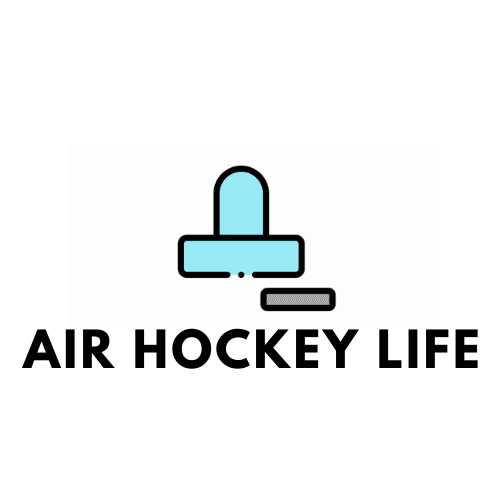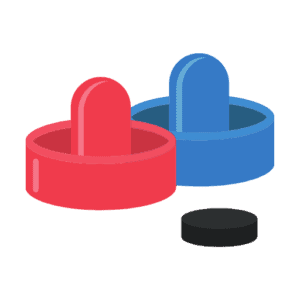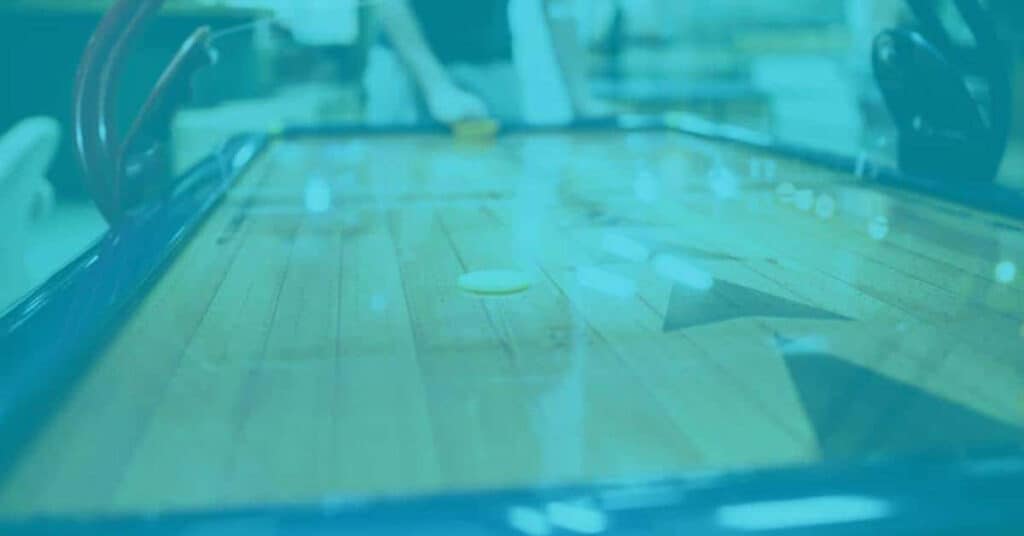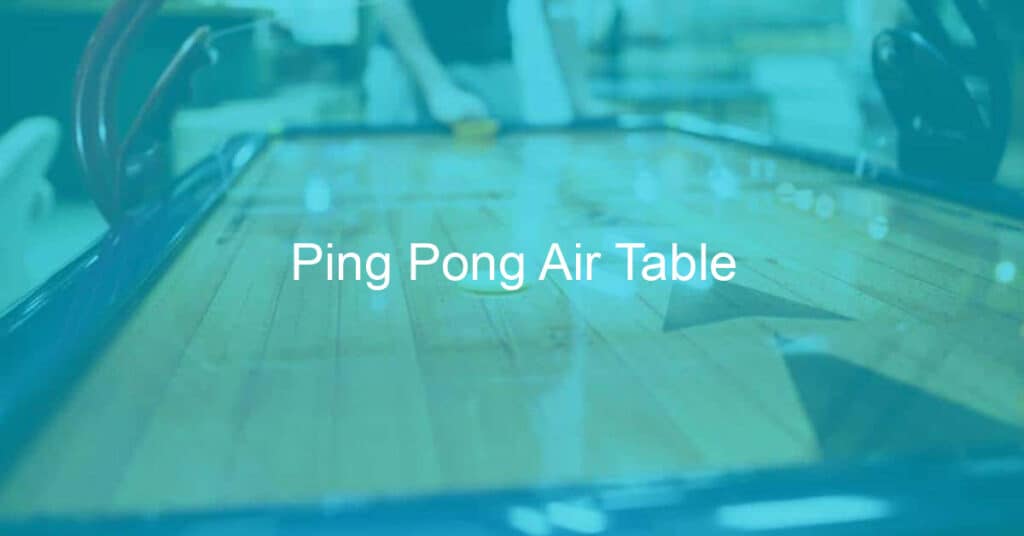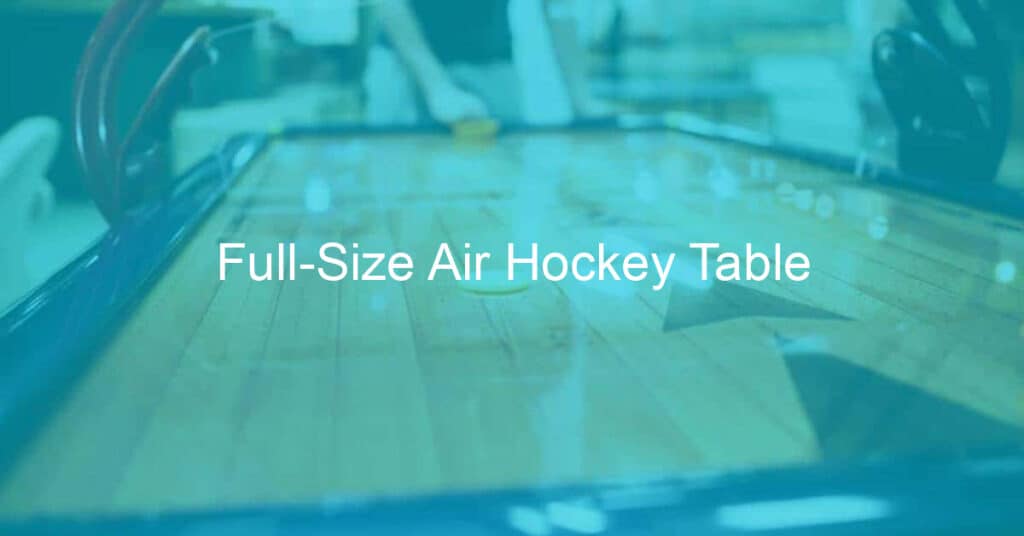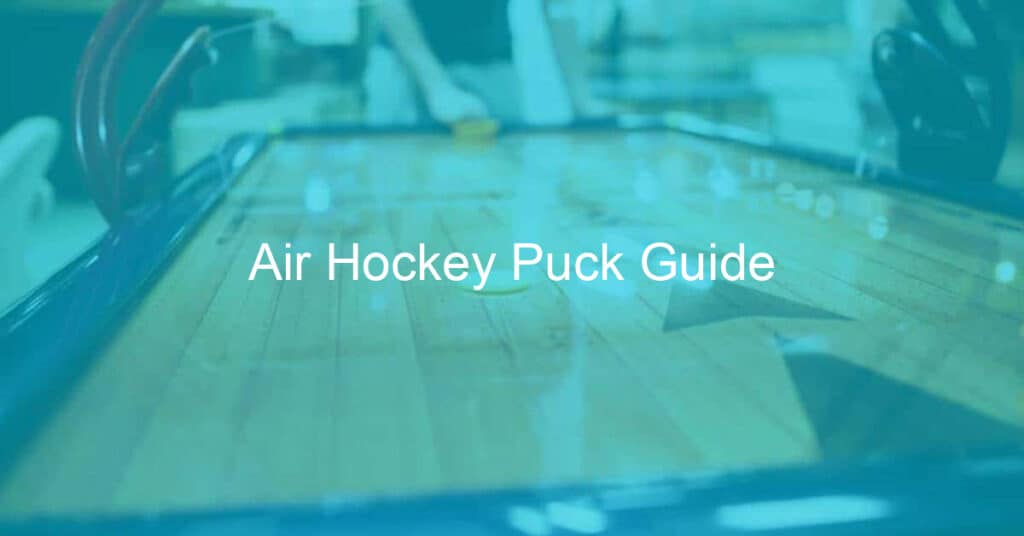If you’ve ever played a game of air hockey or even just watched one, you know that it requires incredible skill, finesse, and speed. But how can players move their paddles so quickly without causing any friction?
In this blog post, we’ll explore the science behind air hockey and how the unique design of an air hockey table reduces friction to create a fast-moving and exciting game. If you’re an experienced player or new to the sport, keep reading for some fascinating information about one of everyone’s favorite family games!
What is the air pressure in an air hockey table?
Air hockey is a popular game enjoyed by many, but have you ever wondered what makes the puck glide smoothly across the table? One important element is the air pressure within the air hockey table.
Typically, the air pressure in an air hockey table ranges between 4 and 5 pounds per square inch (psi). This might not sound like much, but it’s enough to create a cushion of air that lifts the puck off the surface and reduces friction.
The result is a super-fast and exciting game that demands quick reflexes and sharp hand-eye coordination. So grab your paddle and get ready to experience the thrill of air hockey!
How does the airflow in an air hockey table?
Air hockey is a popular game played all around the world. Have you ever wondered how the airflow works in an air hockey table? Well, it’s quite simple. When you turn on the table, a fan underneath creates a cushion of air which makes the puck glide on the surface.
The fan creates a constant stream of air through tiny holes on the playing surface, making it possible for the puck to glide smoothly. The air pressure is regulated to keep the airflow consistent throughout the game.
Without the air cushion, the puck would simply stick to the table, making the game impossible. Now that you know how the airflow works in an air hockey table, why not give the game a try?
Why does the puck glide more easily on air hockey tables?
Air hockey tables have become a staple at game rooms and entertainment centers around the world, captivating players of all ages with their fast-paced, action-packed gameplay. But have you ever wondered why the puck seems to glide effortlessly across the surface of an air hockey table?
The answer lies in the table’s design. Unlike traditional hockey tables, air hockey tables feature a smooth surface with small, strategically placed holes. These holes create a cushion of air that reduces friction and allows the puck to glide smoothly across the table.
This innovative design not only makes for a fun and exciting game but also ensures that players can enjoy fast-paced, uninterrupted play for hours on end.
What are the dimensions of an air hockey table?
Air hockey is a thrilling game that requires skill and precision, and having the right equipment is crucial to achieving success on the table. One important piece of equipment to consider when setting up an air hockey game is the size of the table.
The standard dimensions of an air hockey table are typically around seven to eight feet long and four feet wide. This size provides enough space for players to move freely around the table and make strategic shots.
Another dimension to consider is the height of the table, which is typically about 30 inches off the ground. Overall, having the correct dimensions is essential for creating the perfect air hockey experience for players of all skill levels.
How do you clean an air hockey table?
Air hockey tables are a fantastic addition to any game room, but they can quickly become dirty and grimy with frequent use. To clean your air hockey table, begin by unplugging it and wiping down the playing surface and walls with a soft cloth to remove any dust or debris.
Next, use a solution of mild detergent mixed with warm water to gently scrub the surface, being careful not to scratch the table. Pay special attention to any areas with stubborn dirt or stains.
Finally, wipe down the surface with a clean, damp cloth and dry it thoroughly with a towel. With these cleaning tips, your air hockey table will be refreshed and ready for hours of more fun.
Why do air hockey tables make noise?
Air hockey tables are a staple of arcades and family game rooms across the world. But why do these tables make so much noise? The answer lies in the mechanics of the game itself.
Each time the puck is struck by the mallet, it creates vibrations that reverberate through the tabletop. These vibrations then translate into sound waves, which we hear as the characteristic “clack-clack” of the game.
But the noise isn’t just a byproduct of gameplay; it’s an essential part of the air hockey experience. The sound adds to the excitement of the game, and players rely on it to know when the puck has been struck and where it’s headed.
So the next time you hear that familiar sound of an air hockey game in progress, remember that it’s not just noise – it’s an integral part of the fun!
How do you maintain an air hockey table?
Air hockey tables can provide endless entertainment, but they also require some upkeep to ensure they continue to function properly. To maintain your air hockey table, it is recommended to clean the playing surface regularly with a microfiber cloth and mild cleaning solution.
Be sure to check the fan and motor for any debris buildup and clean them as well. Additionally, you should inspect the table’s legs and exterior for any damage or wear and tear.
By taking these simple steps, you can keep your air hockey table in top shape, so you can keep enjoying it for years to come.
Conclusion
Clearly, air hockey is largely successful in enabling a game to be smoother and faster-paced as a result of reducing friction. As seen above, this can be accomplished through multiple methods – from the angled walls surrounding the playing surface that allow the puck to travel further without losing momentum, to the cushioning effect of an evenly dispersed fan-generated stream of air.
Understanding and utilizing these functions can mean greater control for players, leading to better and more exciting matches. So next time you find yourself at an air hockey table, pause for a moment to appreciate all that’s been done in order to reduce friction – after all, this is what makes the game so enjoyable in the first place.
Ultimately, whether you’re trying your hand at pub tournaments or simply having fun with friends and family, it’s always important to remember: the less friction involved in your gameplay session, the better!
